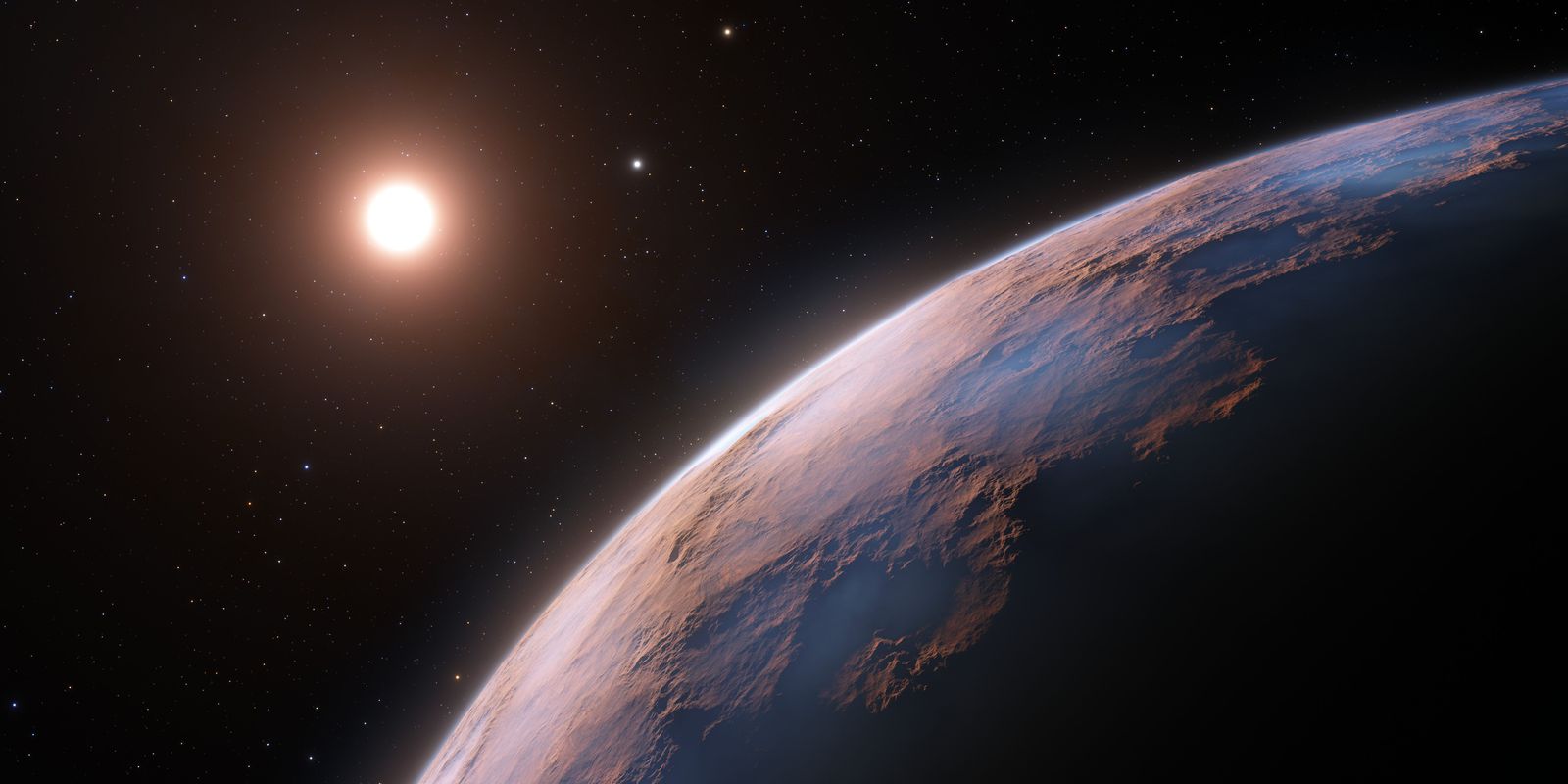A team of astronomers has found evidence of the existence of another planet orbiting Proxima Centauri, which is the closest star to our Solar System. Proxima Centauri is situated just over 4 light years away. This planet candidate is the third detected in this planetary system and the lightest discovered so far orbiting this star. At just a quarter of the mass of Earth, the planet is also one of the lightest exoplanets ever found.
“This discovery shows us that our closest neighbor star seems to have a number of interesting planets in its orbit, within reach of further studies and future explorations”, explains João Faria, a researcher at the Institute of Astrophysics and Space Sciences, in Portugal, and leader of the study published today in the journal Astronomy & Astrophysics.
The discovery was only possible with the help of the Very Large Telescope (VLT), of the European Southern Observatory (ESO), located in Chile and dedicated precisely to the search for exoplanets, as the planets outside the Solar System are called.
The newly discovered planet was named Proxima d. It orbits the star Proxima Centauri at a distance of about 4 million km, which is less than a tenth of the distance between Mercury and the Sun. The planet orbits between the star and its habitable zone — the region around the star. where liquid water can exist on the surface of a planet — and it takes just five days to complete one orbit around Proxima Centauri.
In addition to Proxima d, two other planets were already known to orbit Proxima Centauri: one is Proxima b, a planet with a mass comparable to that of Earth that orbits the star every 11 days and is in its habitable zone, and candidate planet Proxima c, which performs a longer five-year orbit around the star. They all have rocky features.
Proxima b was discovered a few years ago with the help of the HARPS instrument mounted on ESO’s 3.6-metre telescope. This finding was confirmed in 2020 when scientists observed the Proxima System with a new, higher-precision instrument mounted on ESO’s VLT, ESPRESSO (Echelle SPectrograph for Rocky Exoplanets and Stable Spectroscopic Observations). stable spectroscopic).
It was during these most recent observations of the VLT that astronomers detected the first hints of a signal corresponding to a new object with an orbit of five days. Because the signal was so weak, the team had to perform follow-up observations with ESPRESSO to confirm that it was due to a planet, and not simply a result of changes in the star itself.
“After obtaining new observations, we were then able to confirm that this signal corresponded to a new candidate for a planet”, says Faria. “I was very excited about the challenge of detecting such a weak signal and discovering an exoplanet so close to Earth.”
At just a quarter of the mass of Earth, Proxima d is the lightest exoplanet ever measured using the radial velocity technique, surpassing a recently discovered planet in the L 98-59 planetary system. The technique works by capturing tiny wobbles in a star’s motion created by the gravitational pull of an orbiting planet. The effect of Proxima d’s gravity is so small that it only causes Proxima Centauri to move back and forth at about 40 centimeters per second (1.44 km/h).
“This result is extremely important. This shows that the radial velocity technique has the potential to reveal a population of light planets, like ours, that must be the most abundant in our galaxy and that could potentially host life as we know it”, says Pedro Figueira, scientist at the ESPRESSO instrument from ESO, Chile, and also a researcher at the Institute of Astrophysics and Space Sciences, in Portugal.
ESPRESSO’s search for other planets will be complemented by ESO’s Extremely Large Telescope (ELT), currently under construction in the Atacama Desert, which will be crucial in discovering and studying many more planets around nearby stars.
The finding was documented in the article A short-period sub-Earth orbiting candidate Proxima Centauripublished in the journal Astronomy & Astrophysics.
*With information from the European Southern Observatory (ESO) website.
















